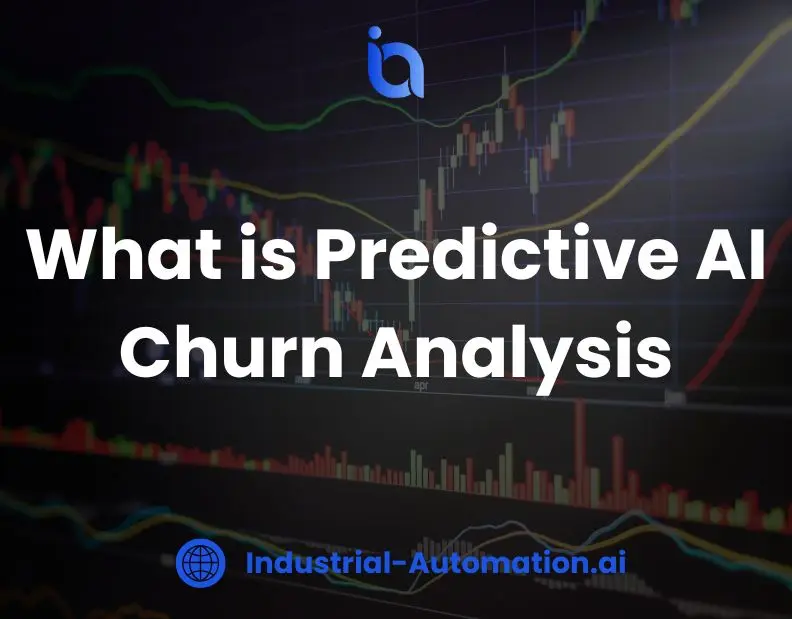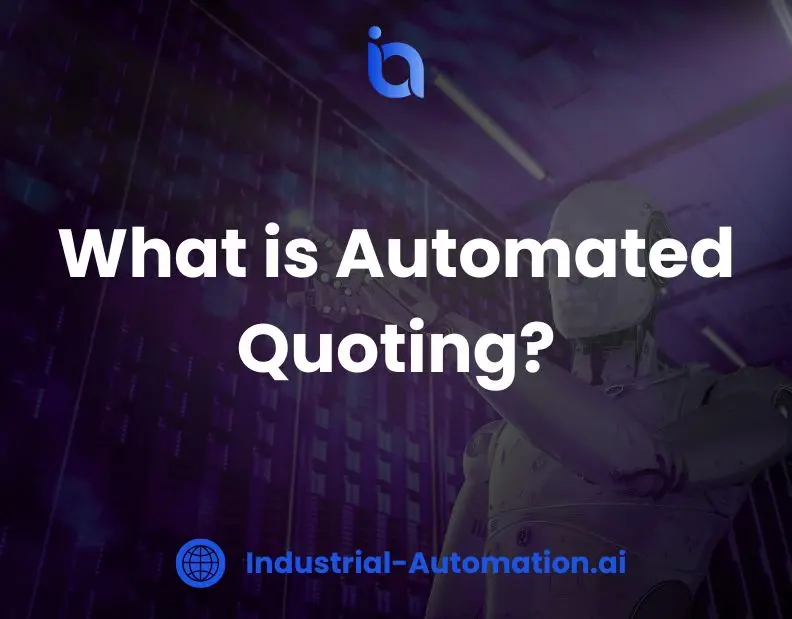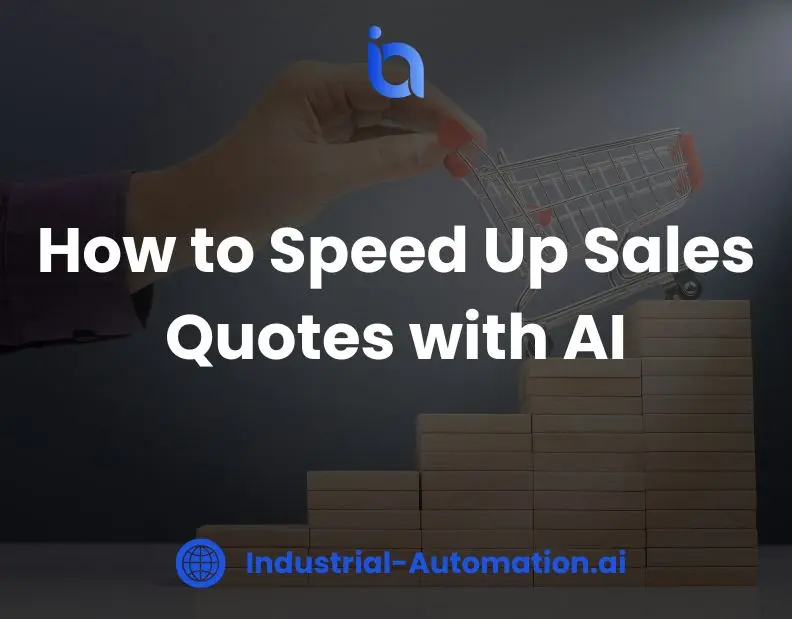What Is Predictive AI Churn Analysis?
Predictive AI churn analysis is a powerful tool that uses machine learning algorithms to predict when a customer is likely to leave a company.
This allows businesses to take proactive steps to retain customers before they churn.
Unlike traditional methods, which often rely on spreadsheets or basic rules, AI models of Industrial Automation AI can analyze vast amounts of data to provide more accurate and timely predictions.
By understanding the key indicators of churn, businesses can tailor their strategies to retain at-risk customers and reduce losses.
Key Takeaways:
- Predictive AI churn analysis helps businesses identify customers at risk of leaving, allowing proactive retention efforts.
- AI leverages data like sales history, payment patterns, and service interactions to predict churn with high accuracy.
- Industries like manufacturing benefit greatly from AI-driven churn analysis, as it automates and streamlines retention efforts.
- Implementing predictive AI churn analysis involves careful data auditing, model training, and continuous monitoring.
- Predictive AI tools, like those from Industrial Automation AI, provide manufacturers with zero IT overhead and scalable solutions to reduce churn and enhance customer retention.
Customer churn explained
Customer churn refers to the loss of clients or customers over a given period, which can significantly harm your business. Losing customers means losing revenue, which can have a ripple effect on other aspects of the business, such as marketing costs, resource allocation, and customer service demands.
How AI predicts churn: Machine learning vs. traditional spreadsheet methods
Traditional churn prediction often relies on basic data analysis with spreadsheets. While these methods are limited in their ability to process large datasets and recognize complex patterns.
AI, on the other hand, leverages machine learning algorithms that continuously learn from incoming data. These algorithms can process millions of data points quickly and identify patterns that would be nearly impossible for humans to spot.
How Predictive AI Works to Spot At-Risk Customers
Predictive AI churn analysis doesn’t just look at a single data point; it examines multiple factors to assess a customer’s likelihood of leaving. Industrial Automation AI’s models process historical and real-time data, identify patterns, and predict churn before it happens.
1- Data sources matter:
The key to effective predictive AI churn analysis lies in the data. AI models pull data from various sources to get a full picture of customer behavior.
Sales history, service interactions and payment patterns are some key data points. By combining these data points, AI can build a comprehensive view of a customer’s journey, making churn predictions much more accurate.
2- Key AI models for churn prediction
Several machine learning models can be used for churn prediction, each with its strengths.
Decision trees break down customer data into a series of yes/no questions to predict outcomes, making them easy to interpret.
Neural networks, inspired by the human brain, can analyze complex patterns in large datasets and make highly accurate predictions.
Logistic regression models are used to predict probabilities and can be particularly effective for binary outcomes like churn (yes or no).
By using a combination of these models, businesses can improve the accuracy and reliability of churn predictions.
3- The role of real-time analytics
Real-time analytics are crucial for churn prediction. By analyzing data as it comes in, businesses can take immediate action rather than waiting for trends to become evident over time.
For example, if an AI system detects a customer’s decline in interaction or engagement, it can trigger automated follow-up actions, like sending an offer or a satisfaction survey, before the customer even considers leaving. This proactive approach helps businesses stay ahead of churn and act quickly to retain customers.
Turning Predictions Into Action: 4 Proven Retention Strategies
Once predictive AI identifies customers at risk of churning, the next step is to act on these predictions. Here are five strategies businesses can use to turn predictions into action and improve customer retention.
1- Personalize customer communication
One of the most effective ways to retain customers is through personalized communication. Industrial Automation AI agents can help create tailored emails or messages for customers based on their behavior and risk of churn. Personalizing communication makes customers feel valued and helps rebuild relationships that may be on the verge of breaking down.
2- Automate proactive support
AI chatbots can be a game-changer when it comes to proactive support. Instead of waiting for customers to reach out with problems, businesses can use chatbots to identify issues before they escalate. This instant, automated assistance can help resolve issues before they contribute to churn.
3- Launch targeted loyalty programs
Loyalty programs are an excellent way to retain customers, and AI can help you target them more effectively. By analyzing customer data, Industrial Automation AI can identify those most likely to benefit from loyalty programs and send them personalized offers.
4- Upsell/cross-sell
AI-driven recommendations can be used to increase sales while reducing churn. By analyzing past purchase behavior and predicting future needs, AI agents can recommend products that a customer is likely to be interested in. These upsell and cross-sell opportunities not only increase revenue but also help customers find additional value in your offerings.
Step-by-Step Guide to Implementing Predictive AI Churn Analysis
Implementing predictive AI churn analysis can seem daunting, but following these steps by Industrial Automation AI will help you integrate it seamlessly into your business.
Step 1: Audit your data
Start by auditing the data you currently have. Identify gaps in your customer data—are you missing payment histories, service records, or customer feedback? Clean, complete data is crucial for accurate predictions.
Step 2: Choose the right AI tools
The right AI tools will integrate smoothly with your existing systems, like your ERP, to ensure that customer data is up-to-date and easily accessible. Security is also a top priority, especially when dealing with sensitive customer information.
Step 3: Train your AI model with clean, historical data
The success of your AI model depends on the quality of the data it’s trained on. Historical data, including past customer behavior, will help the AI learn patterns and make more accurate predictions.
Step 4: Test predictions and refine
Before fully rolling out the AI system, test it with a smaller group of customers to ensure it makes accurate predictions. Refine the model as necessary based on feedback and observed results.
Step 5: Monitor results and update models
AI models need to be continuously monitored and updated to avoid becoming outdated. As customer behaviors and market conditions change, so should your predictions.
Common Mistakes to Avoid
1- Using outdated data
In industries like manufacturing, relying on outdated data can lead to inaccurate churn predictions. Always use the most recent data to ensure your AI models reflect current trends.
2- Over-relying on automation
While AI can automate many tasks, human intervention is still necessary for handling complex or sensitive customer issues that require emotional intelligence or unique insights.
3- Ignoring industry nuances
Different industries have unique churn triggers. For instance, manufacturing churn may be influenced by long-term contract renewals, while retail churn is often affected by price sensitivity. Tailor your predictive models to suit your industry’s specific needs.
How to Measure Success
Key metrics: Churn rate, Customer Lifetime Value (CLV), retention cost
Key performance indicators (KPIs) like churn rate, CLV, and retention costs will help measure the success of your churn prevention strategies. These metrics give you insight into how well you’re retaining customers and how AI is impacting your bottom line.
ROI calculation
To prove the value of AI to stakeholders, calculate ROI by comparing the costs of churn prevention with the savings from reduced churn and increased customer retention.
Final Words
In conclusion, predictive AI churn analysis is a powerful tool that can help businesses identify at-risk customers and take proactive steps to retain them.
By leveraging AI models and integrating them with your business processes, you can enhance customer retention, reduce churn, and improve overall profitability.
At Industrial Automation AI, our solutions are designed to seamlessly integrate with your systems, offering you real-time analytics and AI-driven insights to ensure your business thrives.
Ready to reduce churn? Start with Industrial Automation AI today.



